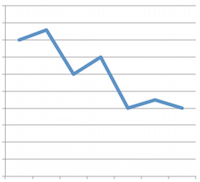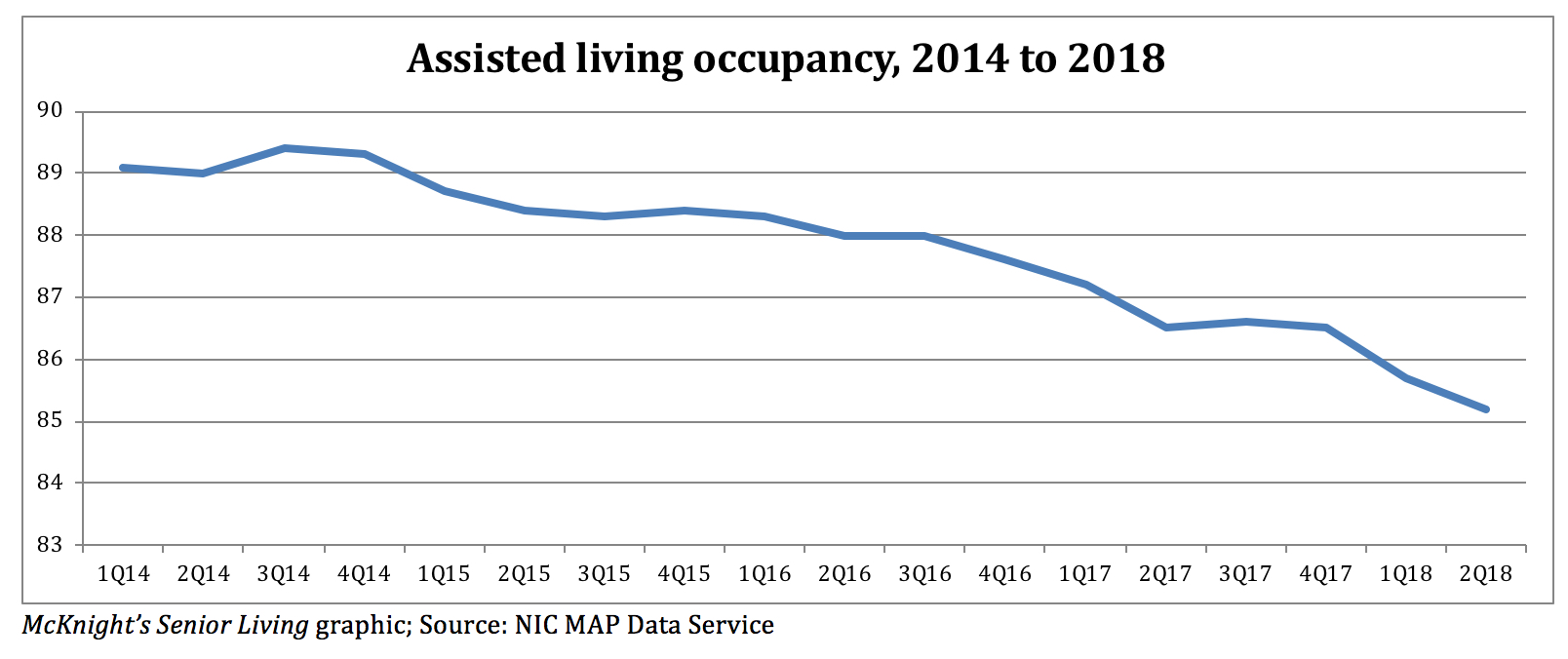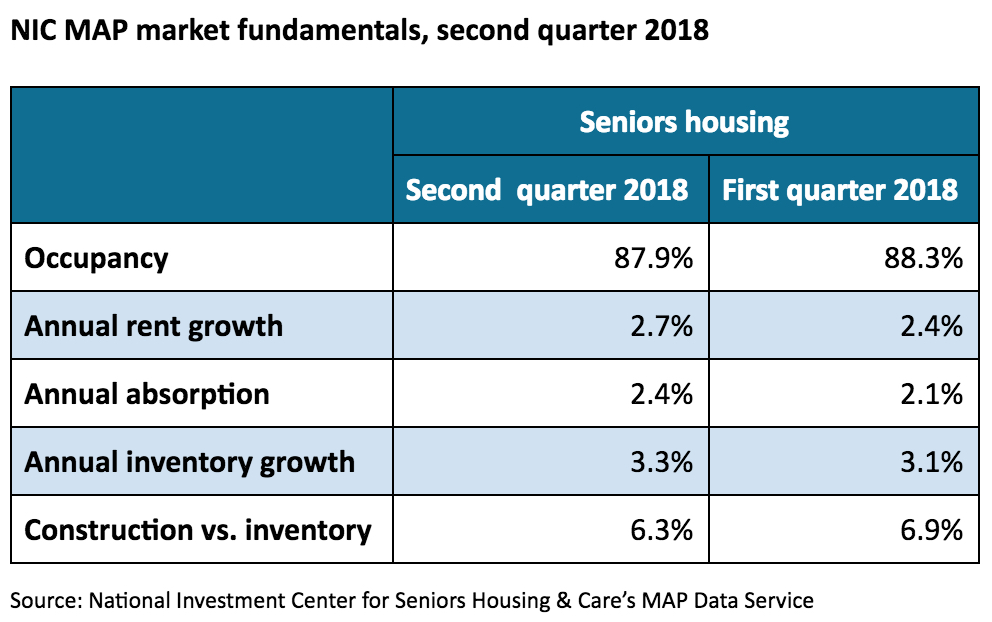
The occupancy rate for assisted living continued its downward trend in the second quarter of 2018, falling lower than last quarter’s record-low average of 85.7% to a low of 85.2%, according to data released Thursday by the National Investment Center for Seniors Housing & Care.
The rate was down 1.1 percentage point from a year ago.
“The occupancy rate for assisted living was the lowest since NIC began to report the data in late 2005,” NIC Chief Economist Beth Burnham Mace said. “Inventory growth also set a record, with more than 4,400 units coming online. Demand accelerated from the first quarter’s flu-related weak levels but was not strong enough to offset growth in inventory.”
 Overall occupancy in U.S. seniors housing properties — assisted living and independent living combined — also continued to decline, averaging 87.9% in the second quarter, down 0.4 percentage points from the previous quarter and 0.8 percentage points from a year ago. The decline places senior living occupancy at its lowest level since the first quarter of 2010 (86.9%), NIC said. Current occupancy is 2.3 percentage points below the most recent high of 90.2% in the fourth quarter of 2014.
Overall occupancy in U.S. seniors housing properties — assisted living and independent living combined — also continued to decline, averaging 87.9% in the second quarter, down 0.4 percentage points from the previous quarter and 0.8 percentage points from a year ago. The decline places senior living occupancy at its lowest level since the first quarter of 2010 (86.9%), NIC said. Current occupancy is 2.3 percentage points below the most recent high of 90.2% in the fourth quarter of 2014.
“The seniors housing occupancy rate has trended downward over the past 10 quarters, which is only two quarters short of its 12-quarter downturn during the Great Recession,” NIC Chief of Research and Analytics Chuck Harry said. “Although annual absorption [change in occupied units] has averaged a solid 2.4% during this 10-quarter downturn to date, the total number of seniors housing units absorbed amounts to only 63 percent of the significant and sustained inventory growth during this same period.”
The occupancy rate for independent living averaged 90.2% during the second quarter, down 0.1 percentage points from the previous quarter and 0.4 percentage points from a year ago.
 Seniors housing annual absorption was 2.4% as of the second quarter of 2018, up 0.3 percentage points from the first quarter of 2018 and down 0.1 percentage points from one year earlier. The seniors housing annual inventory growth rate in the second quarter was 3.3%, up 0.2 percentage points from the first quarter.
Seniors housing annual absorption was 2.4% as of the second quarter of 2018, up 0.3 percentage points from the first quarter of 2018 and down 0.1 percentage points from one year earlier. The seniors housing annual inventory growth rate in the second quarter was 3.3%, up 0.2 percentage points from the first quarter.
The record level of inventory growth exceeded the increase in demand by almost 80%, NIC said.
Preliminary data on construction as a share of existing inventory for seniors housing was 6.3% in the second quarter of 2018, 0.7 percentage points below its recent high of 7% in the fourth quarter of 2017.
Seniors housing construction starts within the 31 primary markets during the second quarter of 2018 preliminarily totaled 4,083 units, which included 2,065 independent living units and 2,018 assisted living units. On a preliminary, four-quarter basis, starts totaled 20,580 units. Construction starts data often are revised retrospectively in subsequent quarters as additional information becomes available, NIC said.
During the second quarter of 2018, the average rate of seniors housing’s annual asking rent growth was 2.7%, up 0.3 percentage points from the previous quarter and down from a recent high of 3.7% in the fourth quarter of 2016. For comparison purposes, NIC said, labor expense growth as measured by the annual change in assisted living average hourly earnings was 5.1% in the first quarter, according to the Bureau of Labor Statistics.



